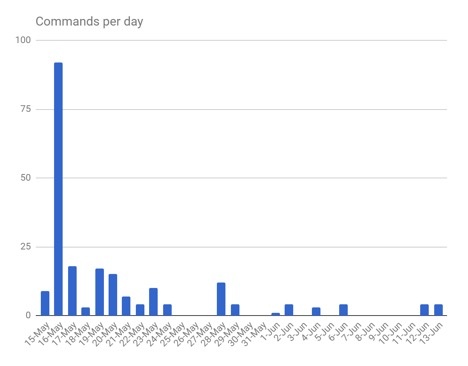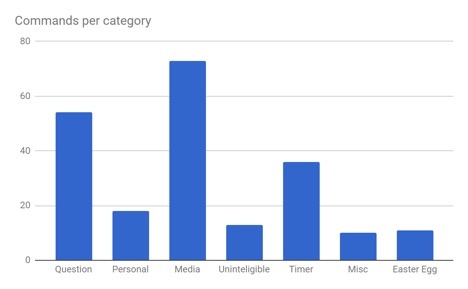Discovering Google Home
I recently spent a month with the Google Home. Advertised as a “hands free smart speaker”, the Home is intended to provide assistance by:
Responding to questions:
- 'When is Elvis Costello’s birthday?
- 'How far away is the Moon?'
Organising the user's personal life:
- 'What do I have in my calendar today?'
- 'How long would it take to drive to the nearest cake shop?'
Controlling media such as Netflix & Google Play Music (subscriptions required):
- 'Play soft jazz'
- 'Play I'm Alan Partridge on Netflix'
Results of all queries are logged in the user’s Google Home app, so users can visit websites that Google Home finds answers from, and get directions to places they’ve asked about.
As a digital marketer, I was very interested to find out how Google’s search functionality would work, so that I can advise clients on how to make sure that their cake shop is the one that Google Home directs hungry people to.
Conveniently, Google stores all interactions a user makes with all of its services, and so I was able to use this data to analyse how I used Google Home.
How I Used Google Home
Initially I was sceptical of how useful it would be. My time in the living room is almost exclusively spent watching TV and eating food. I’m also terrible at maintaining my Google Calendar, nor do I have a schedule so fluid that I regularly need to know what my day looks like in advance.

Data shows that I spoke to the Google Home 215 times during the month. As you can see from the graph above, 47% of all interactions happened within the first two days.
This isn’t typically a very good sign for long-term usage, but it’s worth pointing out that these initial interactions included the initial setup, trying sample queries, and a day working from home in which I issued several music commands. As can be seen, it was almost entirely unused in June, although I was away from the 9th-11th.
I decided to categorise each interaction I had with the Google Home:

Over the course of the month, 50% of commands related to media or controlling a timer. 33% of commands related to questions - personal or generic. Being able to give voice commands to set and monitor a timer proved very useful when my hands were full during cooking, however, I doubt this is something that Google would call a “killer feature” of their product.
Google Home for Search Marketing
Let’s look at the questions I asked Google - these all fell into the Question and Personal categories. Many of the questions revolved around food (again due to me using the Google Home while cooking). When asked a question, Google relays the question to its own search engine, and then reads a summary of the top result with attribution. For example:
“What's the saltiest cheese?” - “On the website bbc.co.uk, they say: The saltiest cheese varieties were the blue cheese Roquefort, with...”
At the time of writing, this answer is also the “number zero” result on the Google search results. I call it number zero because it’s a featured snippet - a box with some text and sometimes an image that appears before the number one result.
When asked location-sensitive questions “Where’s the nearest coffee shop?”, the Google Home again executes a search, and reads out the name and address of the top-three ranked places that would appear on a Google text search.
This means that the search functionalities for Google Home work in the same way they would on a desktop search. However, since there’s no screen to display more results, you have to be number one or even number zero to appear in Google Home's response. Being in the top 10 is no longer good enough if you’d like your business to appear in a voice search.
What I think about Google Home
Overall, I didn’t use the Google Home as much as I expected. It was fun firing all kinds of questions at it (or her) for a while, but I soon lost interest as some more advanced features like a TV guide weren’t available. It was also a good way to spend time with guests, and we even played a trivia game conducted by the Google Home.
Google will hopefully be rolling out some more functionality to the UK soon to bring it in line with their US offering. For example, it can send directions to your phone if you want to buy a cake from your nearest cake shop. This becomes much more interesting to businesses than setting a cooking timer.
It also means that your local business page will have to be very good for you to rank and be picked up by the Google Home. You can also do some shopping with Google Express, however, it’s only available to some selected partners. I’m not sure if they will roll it out for all merchants using their Google Shopping platform or if they will continue using the separate Google Express platform.
Final Thoughts
To conclude, the Google Home still needs some improvement before becoming part of my daily life. However, voice search in general has completely convinced me, and many other people who use it every day,. You should definitely be adapting your search marketing strategy to voice queries if you want to compete in voice search engine results.








